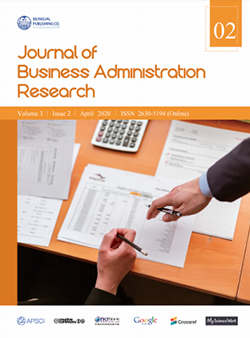Expected Investment Premium in China Capital Market
DOI:
https://doi.org/10.30564/jbar.v3i2.1750Abstract
Through a measurement of corporate investment plan, i.e. expected investment cash flow growth (EICFG), which combines historical equity issuance and factors that influence firm’s future investment, this paper studies the impact of investment expectation on firm’s cross-sectional return of stock in China capital market. I document the negative correlation between EICFG and future stock return in A-share market, and find out that stocks of firms with higher growth of investment cash flow performs significantly worse than those with lower growth of investment cash flow in one year. Our long-short EICFG portfolio generates a statistically and economically significant return which cannot be captured by leading factor models. I further disentangle the covariation between EICFG and expected stock return from rational and behavioral perspective. This paper also extends the research of investment premium to investment-based asset pricing model.
Keywords:
Investment premium, Expected stock return, China capital marketReferences
[1] Cochrane, John H.. Production-based asset pricing and the link between stock returns and economic fluctuations, Journal of Finance, , 1991, 46: 209-237.
[2] Lamont, Owen A.. Investment plans and stock returns, Journal of Finance, 2000, 55: 2719-2745.
[3] Arif, Salman, Charles Lee. Aggregate investment and investor sentiment, Review of Financial Studies, 2014, 27: 3241-3279.
[4] Hirshleifer, David, Kewei Hou, Siew Hong Teoh. Accruals, cash flows, and aggregate stock returns, Journal of Financial Economics, 2009, 91: 389-406.
[5] Cooper, Michael J., H. Gulen, M. J. Schill. Asset Growth and the Cross-Section of Stock Returns, Journal of Finance, 2008, 63: 1609-1651.
[6] Liu, Laura Xiaolei, Toni M. Whited, Lu Zhang. Investment-based expected stock returns, Journal of Political Economy, 2009, 117: 1105-1139.
[7] Cooper, Ilan, R. Priestley. Real investment and risk dynamics, Journal of Financial Economics, 2011, 101: 182-205.
[8] Li, Jun, HuijunWang. Expected investment growth and the cross section of stock returns, Working Paper, 2018.
[9] Li, Jun, HuijunWang, Jianfeng Yu. Aggregate expected investment growth and stock market returns, Working Paper, 2018.
[10] Li, Dongmei, L. Zhang. Does q-theory with investment frictions explain anomalies in the cross section of returns? Journal of Financial Economics, 2010, 98: 297-314.
[11] Gennaioli, Nicola, Yueran Ma, Andrei Shleifer. Expectations and investment, NBER Macroeconomics Annual, 2016, 30: 379-431.
[12] Pontiff, Jeffrey, Artemiza Woodgate. Share issuance and cross-sectional returns, Journal of Finance, 2008, 63: 921–945.
[13] Jegadeesh, Narasimhan, Sheridan Titman. Returns to buying winners and selling losers: Implications for stock market efficiency, Journal of Finance, 1993, 48: 65–91.
[14] Fama, Eugene F., James D. Macbeth. Risk, return, and equilibrium: Empirical tests, Journal of Political Economy, 1973, 71: 607–636.
[15] Newey, Whitney, Kenneth West. A simple, positive semi-definite, heteroskedasticity and autocorrelation consistent covariance matrix, Econometrica, 1987, 55: 703-08.
Downloads
Issue
Article Type
License
Copyright and Licensing
The authors shall retain the copyright of their work but allow the Publisher to publish, copy, distribute, and convey the work.
Journal of Business Administration Research publishes accepted manuscripts under Creative Commons Attribution-NonCommercial 4.0 International License (CC BY-NC 4.0). Authors who submit their papers for publication by Journal of Business Administration Research agree to have the CC BY-NC 4.0 license applied to their work, and that anyone is allowed to reuse the article or part of it free of charge for non-commercial use. As long as you follow the license terms and original source is properly cited, anyone may copy, redistribute the material in any medium or format, remix, transform, and build upon the material.
License Policy for Reuse of Third-Party Materials
If a manuscript submitted to the journal contains the materials which are held in copyright by a third-party, authors are responsible for obtaining permissions from the copyright holder to reuse or republish any previously published figures, illustrations, charts, tables, photographs, and text excerpts, etc. When submitting a manuscript, official written proof of permission must be provided and clearly stated in the cover letter.
The editorial office of the journal has the right to reject/retract articles that reuse third-party materials without permission.
Journal Policies on Data Sharing
We encourage authors to share articles published in our journal to other data platforms, but only if it is noted that it has been published in this journal.




 Di Liu
Di Liu

